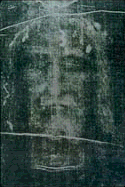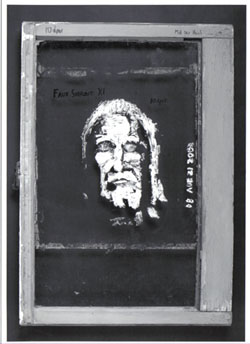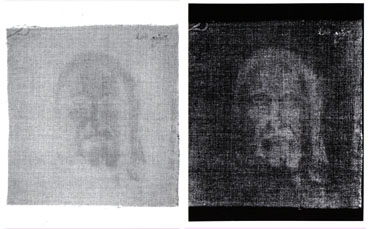Globalnomad
Senior Veteran
- Apr 2, 2005
- 5,390
- 660
- 71
- Faith
- Catholic
- Marital Status
- Married
Some people chase their fantasies and will believe whatever they want to believe, regardless of the facts.
Who needs facts when we have our wild imaginations!
http://www.livescience.com/history/050318_reason_turin_shroud.html
The shroud contradicts the Gospel of John, which describes multiple cloths (including a separate "napkin" over the face), as well as "an hundred pound weight" of burial spices--not a trace of which appears on the cloth.
No examples of the shroud linen's complex herringbone twill weave date from the first century, when burial cloths tended to be of plain weave in any case.
The shroud has no known history prior to the mid-fourteenth century, when it turned up in the possession of a man who never explained how he had obtained the most holy relic in Christendom.
The earliest written record of the shroud is a bishop's report to Pope Clement VII, dated 1389, stating that it originated as part of a faith-healing scheme, with "pretended miracles" being staged to defraud credulous pilgrims.
The bishop's report also stated that a predecessor had "discovered the fraud and how the said cloth had been cunningly painted, the truth being attested to by the artist who had painted it" (emphasis added).
Although, as St. Augustine lamented in the fourth-century, Jesus' appearance was completely unknown, the shroud image follows the conventional artistic likeness.
The physique is unnaturally elongated (like figures in Gothic art), and there is a lack of wraparound distortions that would be expected if the cloth had enclosed an actual three-dimensional object like a human body. The hair hangs as for a standing, rather than reclining figure, and the imprint of a bloody foot is incompatible with the outstretched leg to which it belongs.
The alleged blood stains are unnaturally picture-like. Instead of matting the hair, for instance, they run in rivulets on the outside of the locks. Also dried "blood" (as on the arms) has been implausibly transferred to the cloth. The blood remains bright red, unlike genuine blood that blackens with age.
In 1973, internationally known forensic serologists subjected the "blood" to a battery of tests--for chemical properties, species, blood grouping, etc. The substance lacked the properties of blood, instead containing suspicious, reddish granules.
Subsequently, the distinguished microanalyst Walter McCrone identified the "blood" as red ocher and vermilion tempera paint and concluded that the entire image had been painted.
Let's get back to the basics. Just the most important ones.
Interest in the Shroud exploded at the end of the 19th century when it was photographed for the first time, and it was discovered that the image is a photographic negative - a concept that was unknown to mankind until the invention of photography. It is quite impossible for the image to have been painted by someone who was not familiar with that concept - and even then, he would have had to actually create such a negative and copy it - it is not possible to do it "out of your head".
And the image was NOT, to the best of our scientific knowledge, painted at all. No pigment has been found on the cloth. The outline of the body is more like light scorch marks.
That it is the "conventional likeness of Christ" is obvious, if it had existed and been known during all those centuries. It would not be the Shroud that follows the "conventional likeness of Christ", but the "conventional likeness of Christ" would have arisen from the Shroud.
I think that the article you quote is worse pseudo-science than that of the "Rorschach-like-image" proponents that it quotes. It is pseudo-science because it chooses to address (and deride) only the weakest arguments of the pro-Shrouders, while keeping quiet on the biggest points, those I have just mentioned. It is simply unimaginable that the Shroud could have been artificially produced during the Middle Ages, and the scientific evidence is that it was not painted at all. A medieval document that says that it was, is no proof vis-a-vis the logical impossibility of the thing.
P.S. I am a skeptical liberal Catholic steeped in scientific methods since 25 years; generally dismissive about miracles and relics.
Last edited:
Upvote
0




